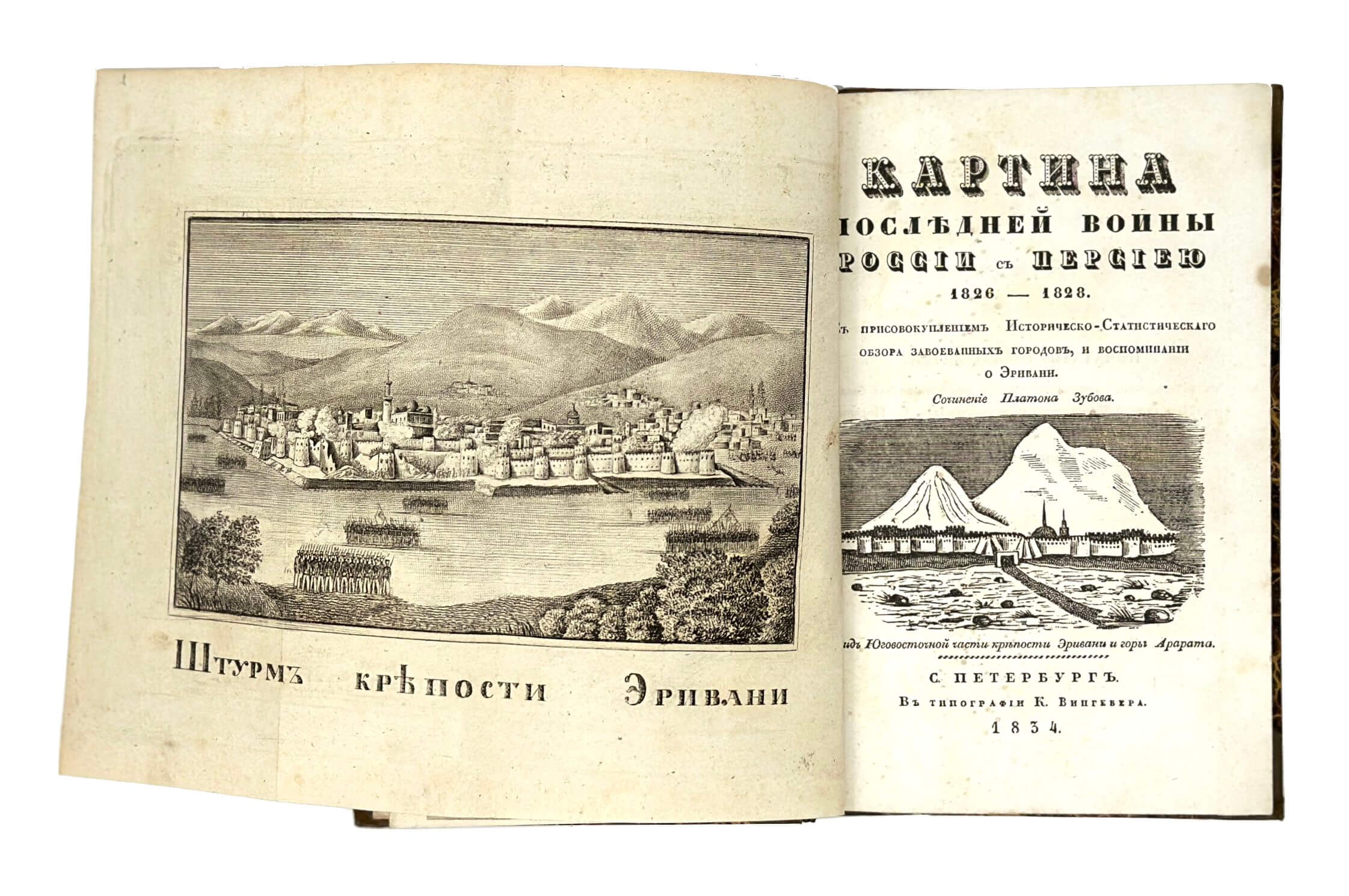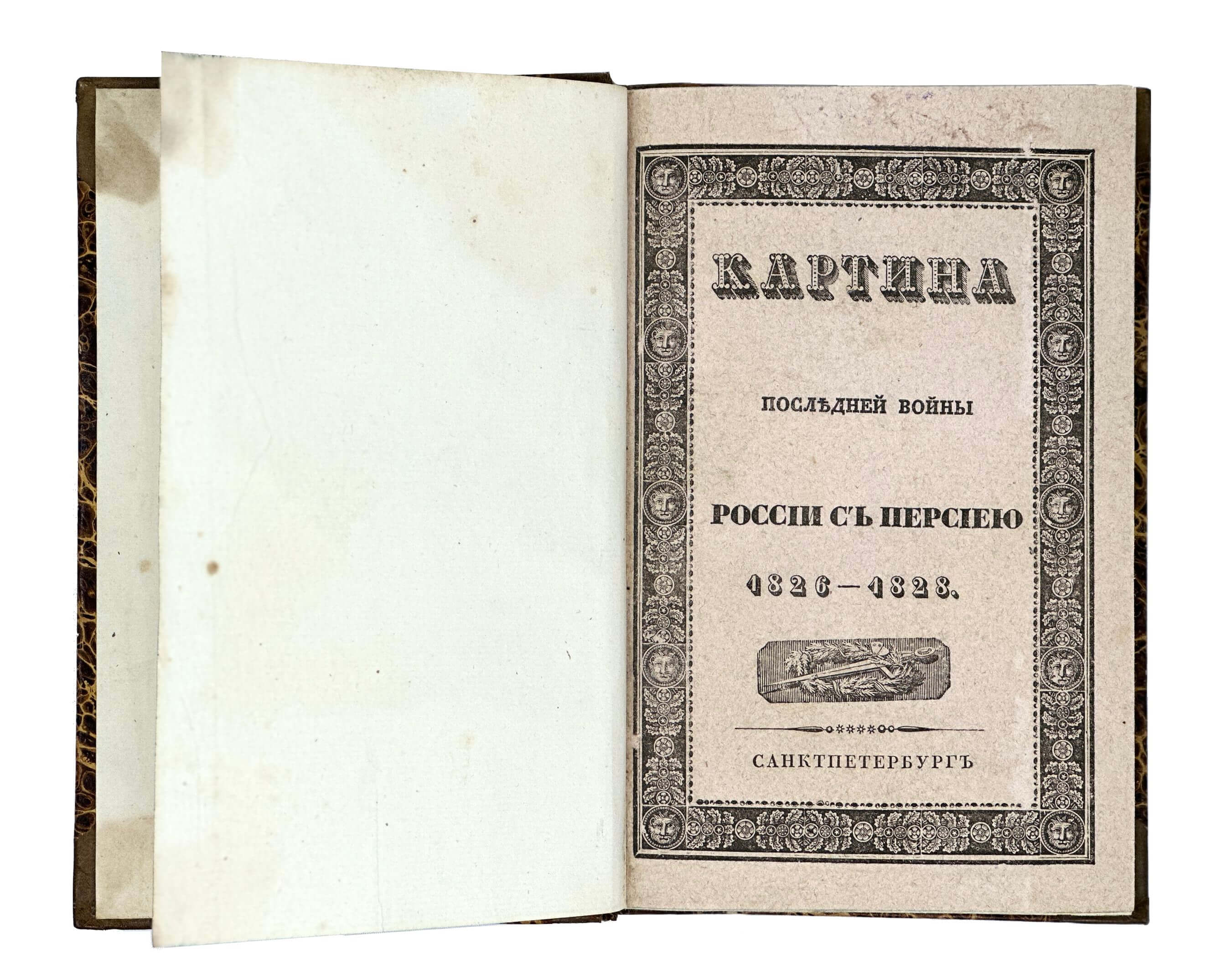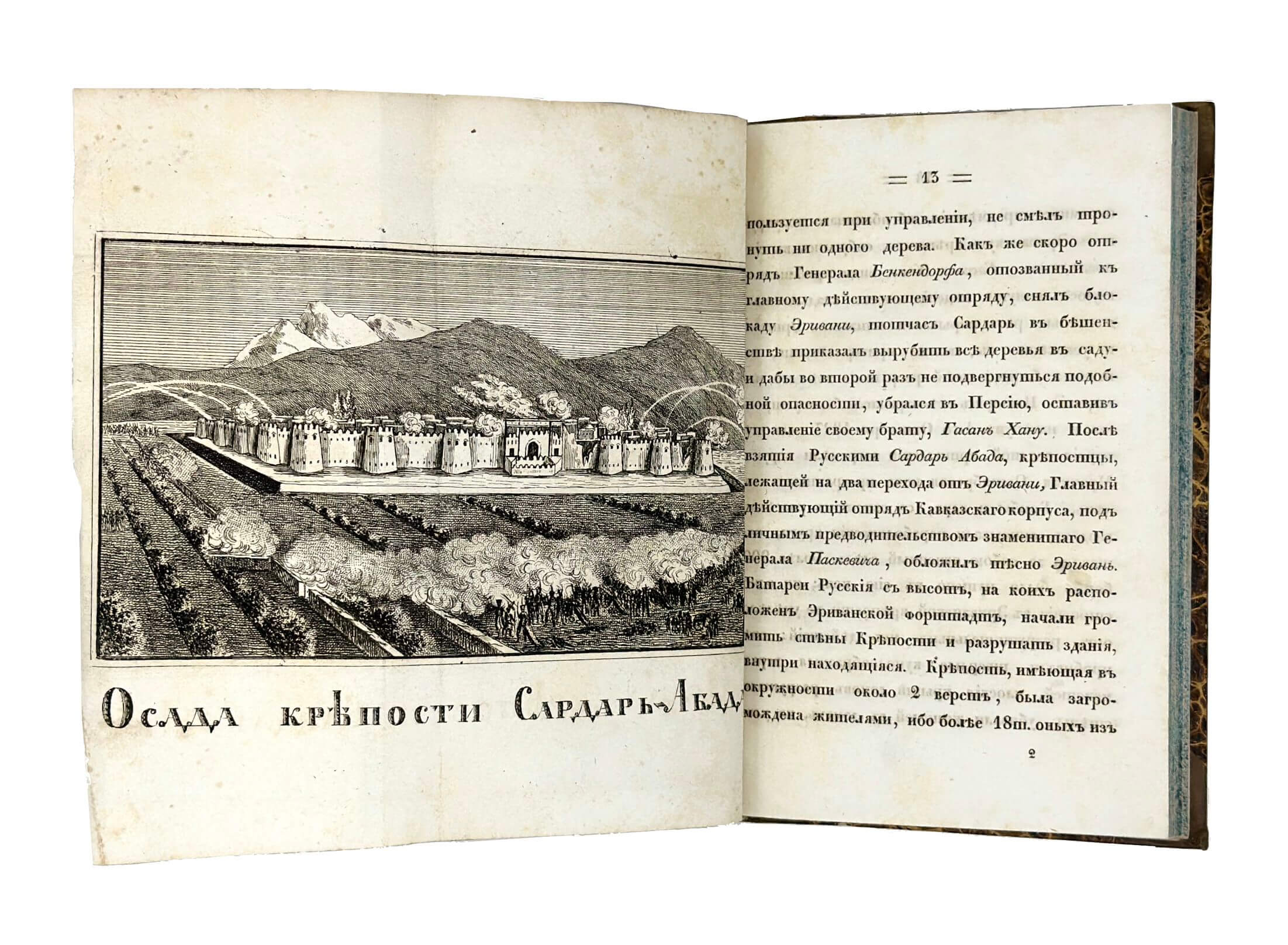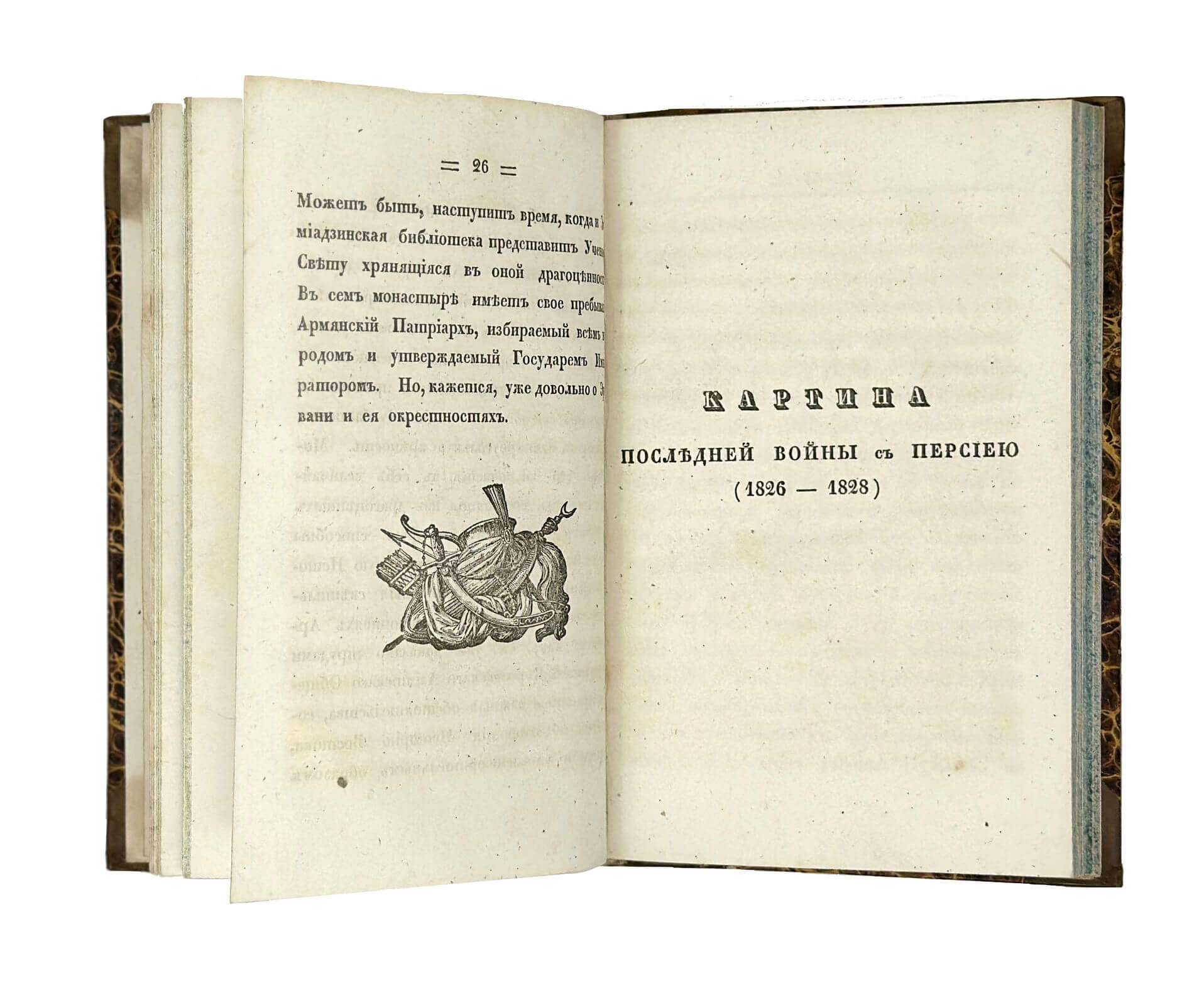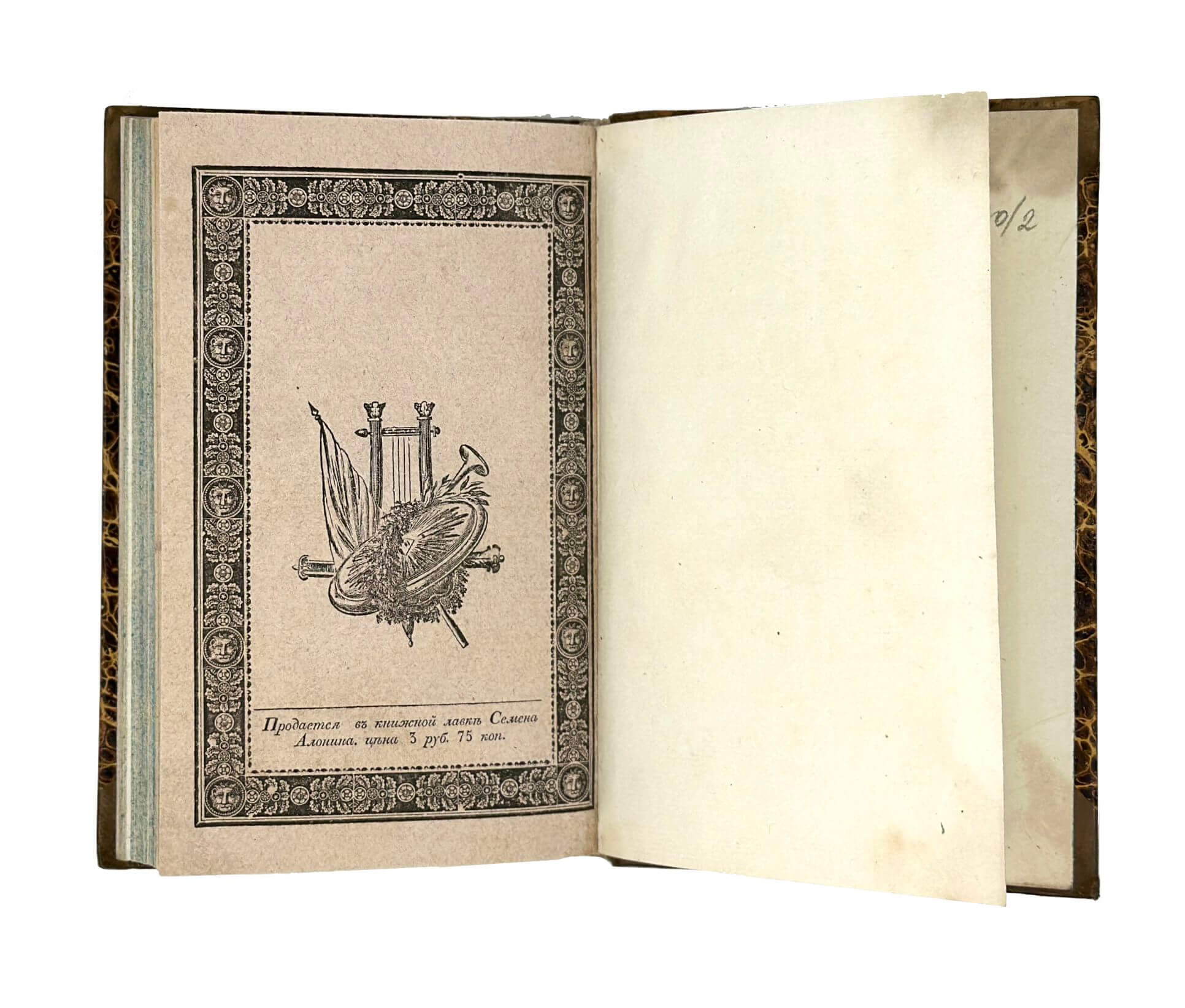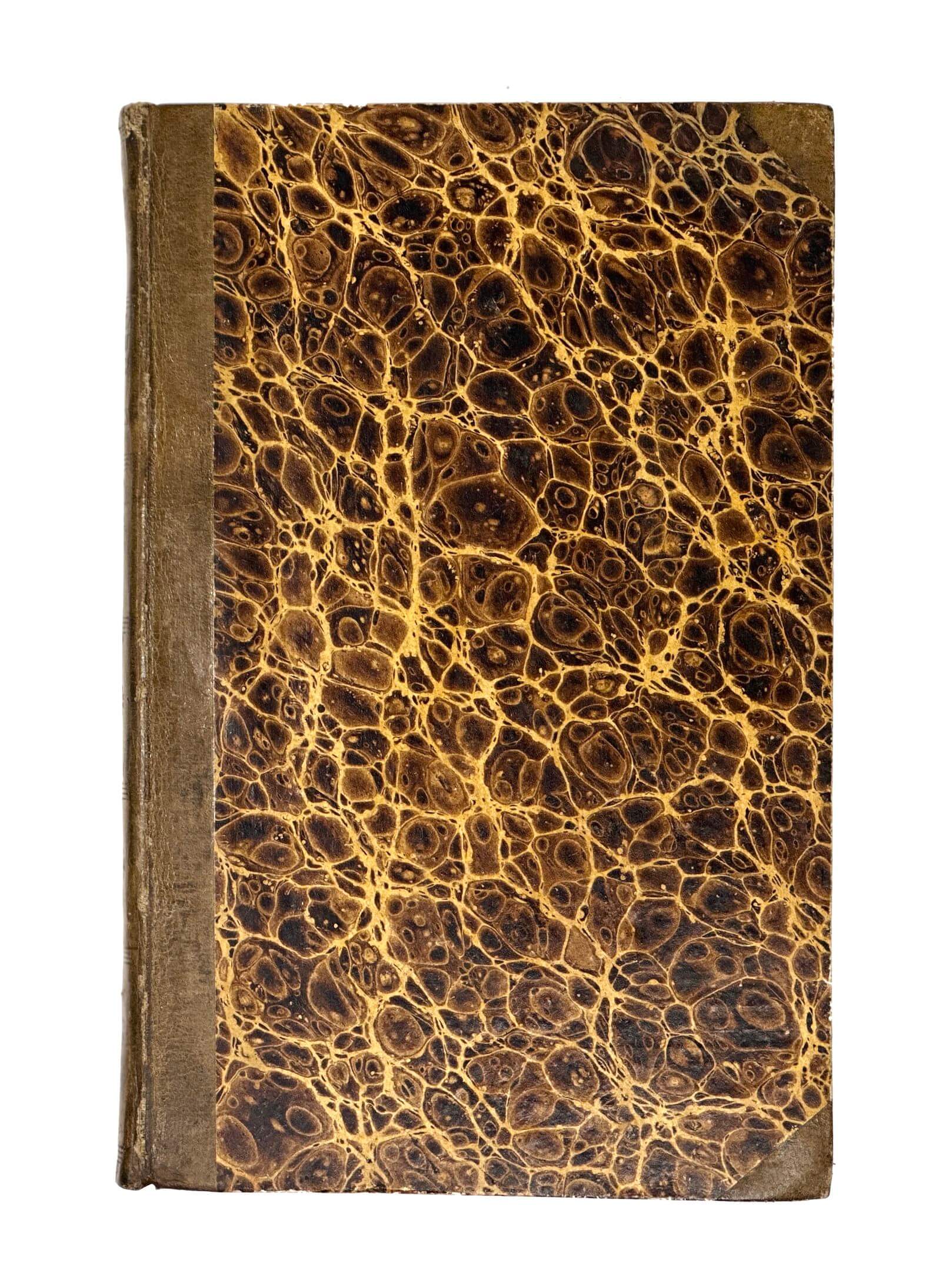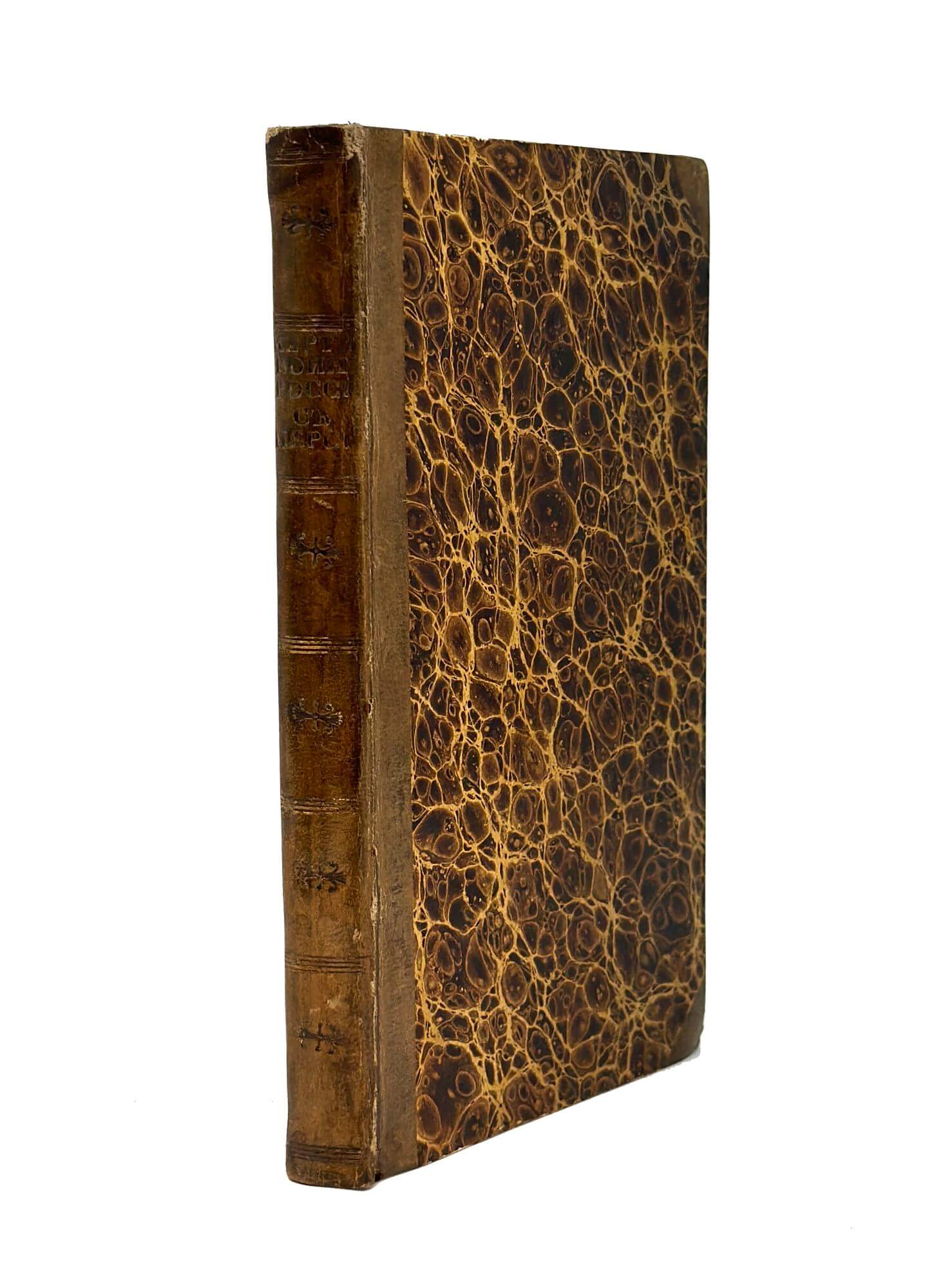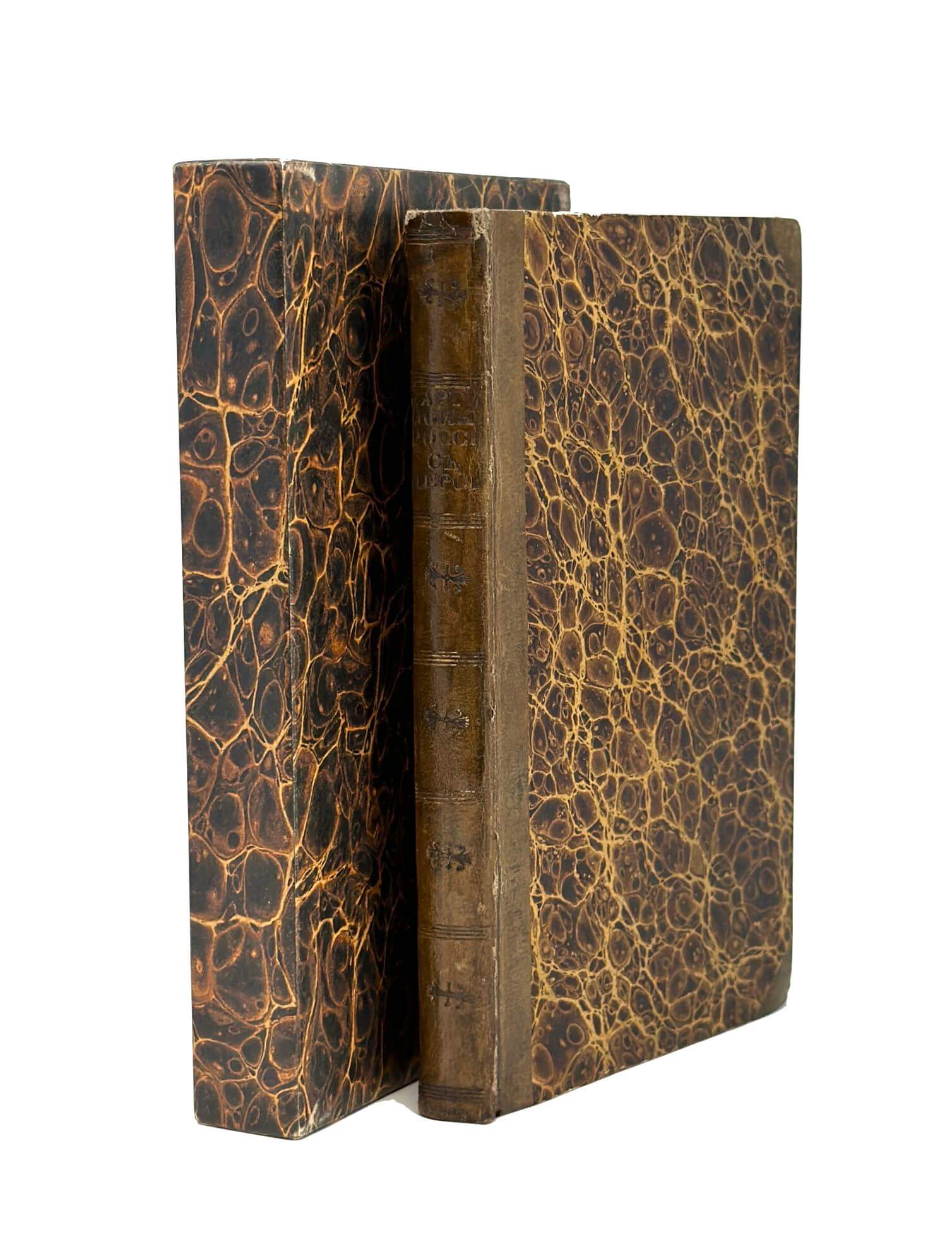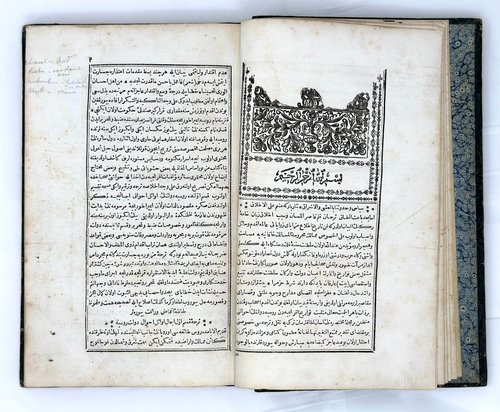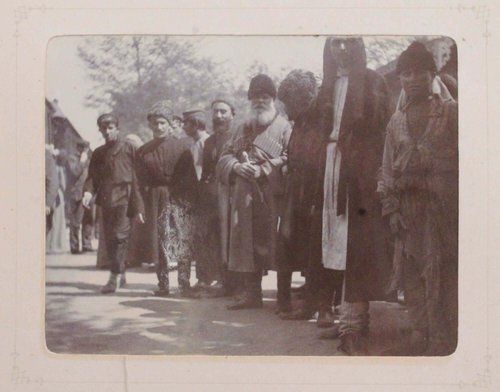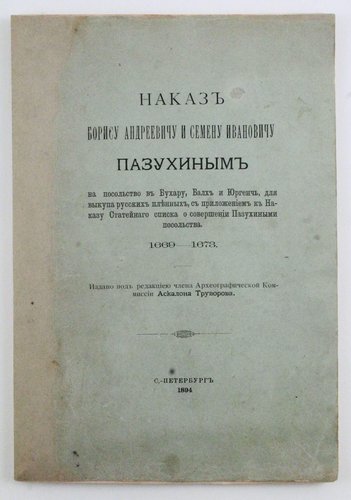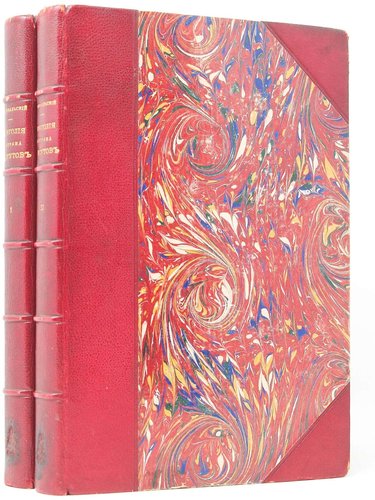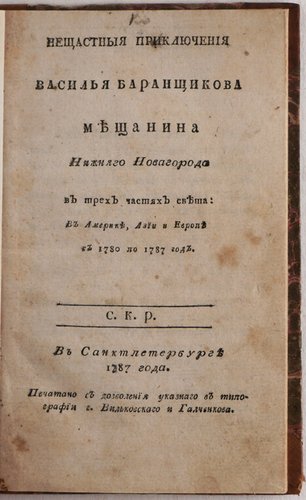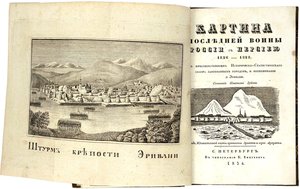
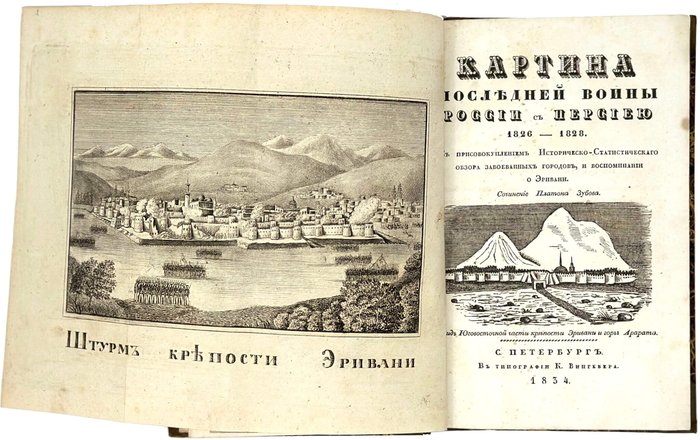
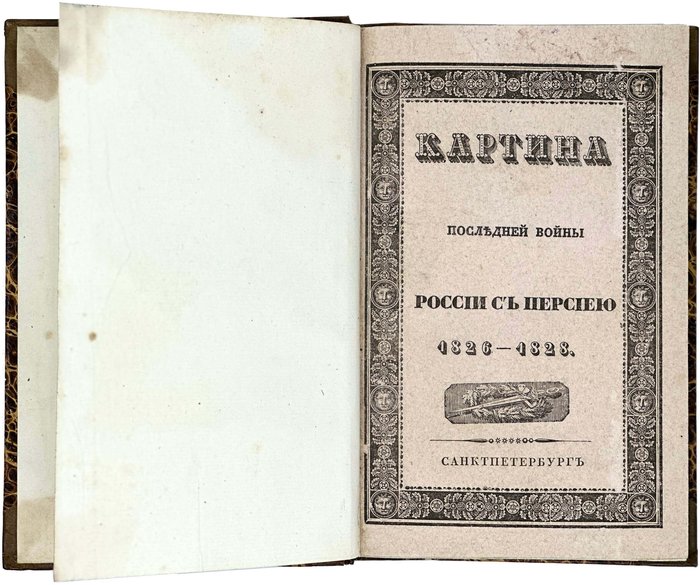
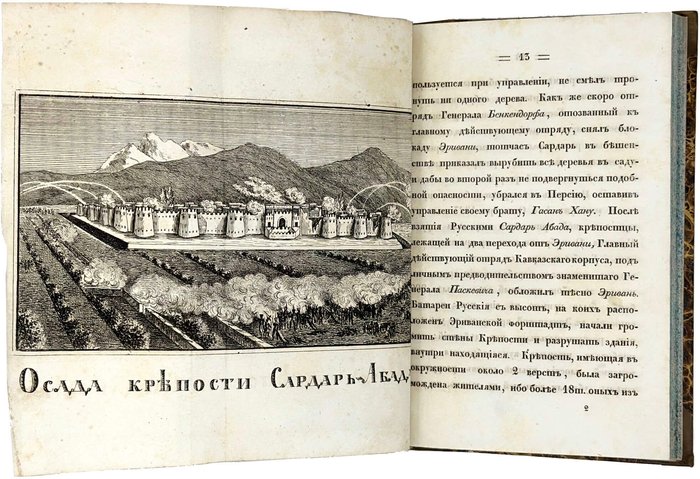
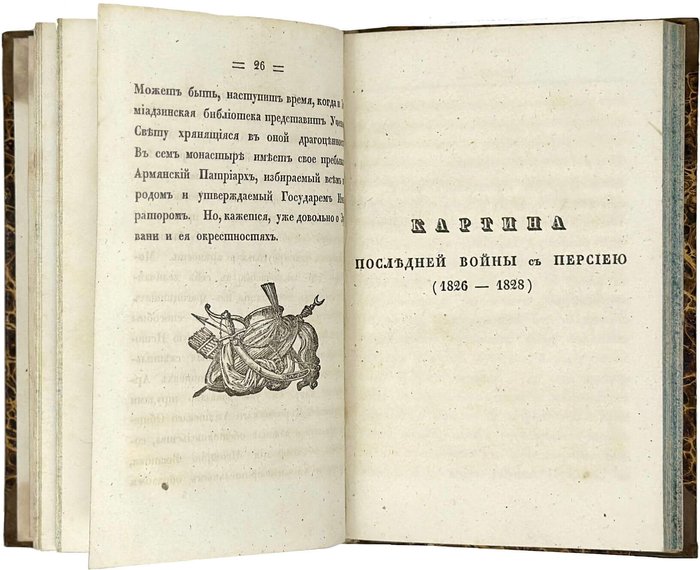
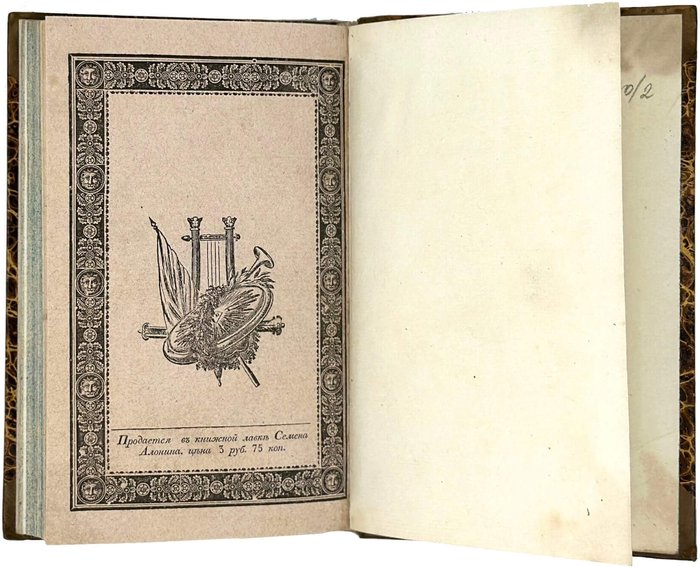
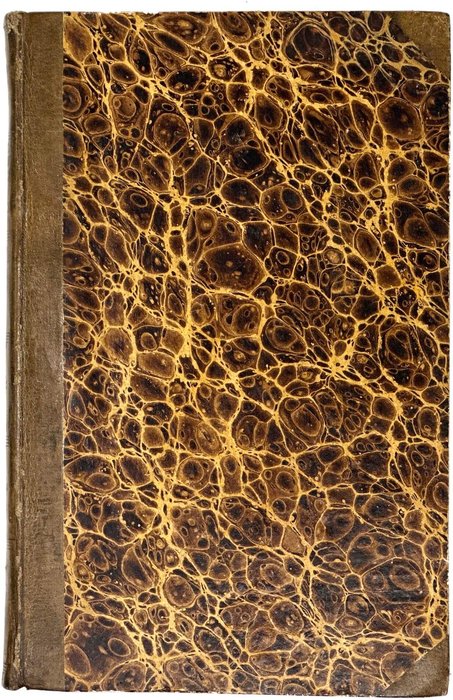
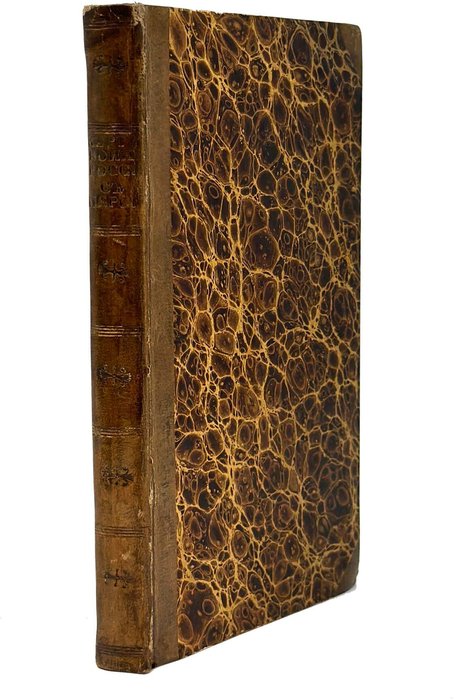
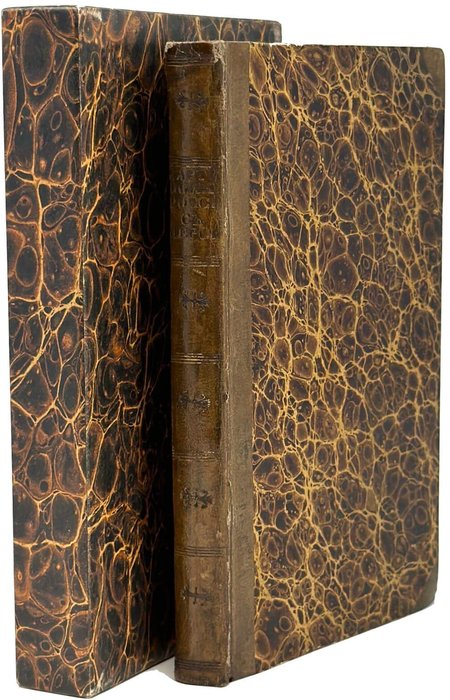
#RA1
1834
First and only edition. Small Octavo (ca. 17x10,8 cm). [1 – t.p.], [1 – dedication leaf], [2 - preface], 7-135, [2 - errata] pp. With two copper-engraved plates, two pictorial woodcut vignettes (on the title page and p. [7]), and two typographical woodcut vignettes (pp. 26, 88). Handsome period brown half sheep with marbled papered boards; both original publisher’s wrappers bound in. With a later custom-made matching slipcase. Text with some very mild age toning otherwise, a near fine very original copy.
Very Rare Russian imprint with no paper copies found in Worldcat. The book wasn’t republished or translated into other languages.
A beautiful copy of a very rare early illustrated account of the Russo-Persian War (1826-1828), written by its participant, a private of the 40th Yeger [Infantry] Regiment of the Separate Caucasus Corps of the Russian Army, Platon Zubov. He was the son of a once-removed cousin of Platon Alexandrovich Zubov (1767-1822, a favourite of Catherine II) and was named after him. During the French Invasion of Russia, Zubov the Younger volunteered in the Russian army. In the early 1820s, he took part in his father’s financial scam making forgeries of government securities. When the scheme was discovered several years later, Platon Zubov was deprived of his nobility and sent as a private to the 40th Yeger [Infantry] Regiment, then stationed in the Caucasus. Together with the regiment, Zubov participated in the Russo-Persian (1826-28) and Russo-Turkish (1828-29) Wars and received a medal for gallantry during the Battle of Kars (June 1828). After Zubov’s retirement in 1833, he became a writer and published several books on the history and contemporary life of the Caucasus and Persia, as well as fiction novels staged there. During the Crimean War, Zubov published collections of propagandist poems. He continued with his forgery of securities and was arrested and sent to serve in a convict detachment of the Russian Navy in 1846. After another arrest warrant had been issued on him in 1857 (for forgery again), Zubov went into hiding and most likely left Russia.
“Kartina posledney voiny Rossii s Persiyeyu” is one of the first books Zubov published after his retirement from the Russian army in 1833. It is dedicated to General Afanasy Ivanovich Krasovsky (1781-1843) - one of the commanders of the Separate Caucasus Corps, who distinguished himself in the siege of Erivan/Yerevan (June-October 1827) and the release of the Echmiadzin monastery (August 1827) during the Russo-Persian War. As follows from Zubov’s preface, the book is based on his diary (“Jornal of the authentic events”), kept during the war, excerpts from which were published in several issues of the “Severnaya Pchela” newspaper in 1831 and 1832.
The book consists of three parts and starts with an essay, “Memoirs of Erivan” (pp. [7]-26), which retells the events of the siege and capture of Erivan in the autumn of 1827 and contains notes on the city’s history, architecture and main structures of the Erivan Fortress, interior and decorations of the Sardar Palace (including the Hall of Mirrors), Sardar’s garden, Ararat Mountain, Echmiadzin Monastery and its history, &c.
An extensive chapter, titled “A picture of the latest war with Persia (1826-1828)” (pp. 29-88), contains an overview of the war’s history, starting from the signing of the Gulistan Peace Treaty, concluding previous Russo-Persian War (1804-1813) and the causes of the 1826-28 War, and ending with the signing of the Turkmenchay Peace Treaty in February 1828. Pp. 80-88 contain texts of three original decrees of Emperor Nicholas I, related to the war: 1) Order of His Majesty the Emperor to the troops of the Separate Caucasus Corps from March 15, 1828 (about the award of all participating troops with the Medal for the Persian War); 2) Imperial Decree to the Governing Senate from March 15, 1828 (about the awards to the commander of the Special Caucasus Corps, Count Ivan Paskevich); 3) Imperial Manifest about peace with Persia from March 21, 1828.
The third part of the book is titled “Historical and statistical overview of Persian cities, captured by our troops during the latest war” (pp. 89-135) and includes interesting notes on the history, geography, architecture, inhabitants, &c. of ten cities and forts in modern-day Armenia (Sardarabad fortress), Nakhchivan Autonomous Republic of Azerbaijan (Nakhchivan City, Urdabad/Ordubad, Abbasabad fortress on the Aras River) and Iran (Tavriz/Tabriz, Khoy, Marand, Urmia, Ardebil/Ardabil, Alanji/Alandji fort).
The book is illustrated with two beautiful copper engraved folding plates, showing “Assault on the Erivan Fortress” (frontispiece) and “Siege of the Sardarabad Fortress” (facing p. 13). Both the Russian State and Russian National Libraries call for only one plate in the book (the frontispiece). Thus, the engraving, titled “Siege of the Sardarabad fortress,” is a rare early and likely previously unknown depiction of the siege and capture of the Sardari Berd fort (now non-existent, was located near modern-day Sardarapat village west of Yerevan) by the troops of Russian General Ivan Paskevich on September 20, 1828. Two woodcut pictorial vignettes show “A view of the southeastern part of the Erivan Fortress and the Ararat Mountains” (title page) and “A view of the Holiest Monastery of all Armenians: Echmiadzin” (p. 7). The binding of our copy has the original publisher’s wrappers preserved, with beautiful neoclassical ornamental borders and vignettes.
“Kartina posledney voiny Rossii s Persiyeyu” is very rare and was not included in the classical Russian bibliographies of illustrated books by V. Vereschagin (Russkye illustrirovannye izdaniya 18 i 19 stoletiy (1720-1870). SPb., 1898), N. Obolyaninov (Katalog russkikh illustrirovannykh izdaniy: 2 vols. Moscow, 1914-1915) and the “Society of lovers of Russian illustrated books” (Materialy dlia bibliografii russkikh illustrirovannykh izdaniy: 4 parts. SPb., 1908-1910).
Overall, a beautiful copy of this rare Russian illustrated account of the Russo-Persian War (1826-1828).
Russkiye Pisateli, 1800-1917: Biograficheskiy slovar. M., 1992. Vol. 2, pp. 361-362.
Olkhin. Sistematicheskiy reestr russkim knigam s 1831 po 1846 god. SPb., 1846. No. 1737 (p. 69).
Gizetti, A. Bibliograficheskiy ukazatel pechatnym na russkom yazyke sochineniyam i statyam o voyennykh deistviyakh russkikh voisk na Kavkaze. SPb., 1901. No. 339.
Antiquarian catalogue No. 22: Army and Navy/Mezhdunarodnaya kniga. M., 1933. No. 252.
“The Russo-Persian War of 1826–1828 was the last major military conflict between the Russian Empire and Persia. After the Treaty of Gulistan that concluded the previous Russo-Persian War in 1813, peace reigned in the Caucasus for thirteen years. However, Fath 'Ali Shah, constantly in need of foreign subsidies, relied on the advice of British agents, who advised him to reconquer the territories lost to the Russian Empire and pledged their support for military action. The matter was decided upon in the spring 1826, when a bellicose party of Abbas Mirza prevailed in Tehran, and the Russian minister, Aleksandr Sergeyevich Menshikov, was placed under house arrest. The war ended in 1828 following the occupation of Tabriz. The war had even more disastrous results for Persia than the 1804-1813 war, as the ensuing Treaty of Turkmenchay stripped Persia of its last remaining territories in the Caucasus, which comprised all of modern Armenia, the southern remainder of modern Azerbaijan, and modern Igdir in Turkey. The war marked the end of the era of the Russo-Persian Wars, with Russia now the unquestioned dominant power in the Caucasus” (Russo-Persian War (1826–1828) | Map and Timeline ).

